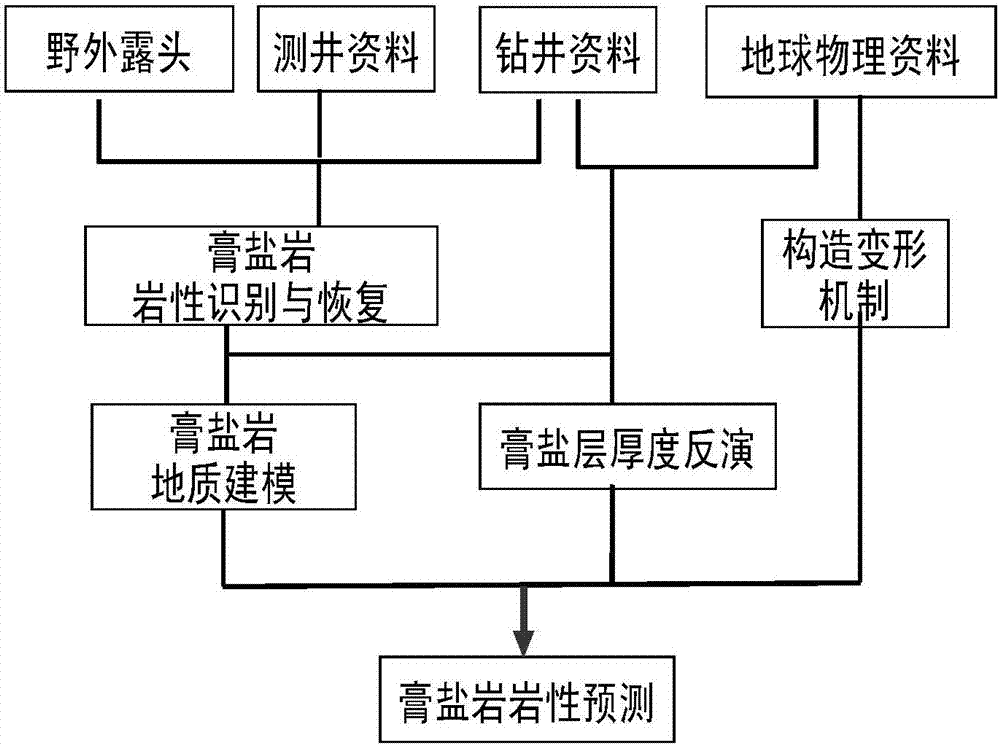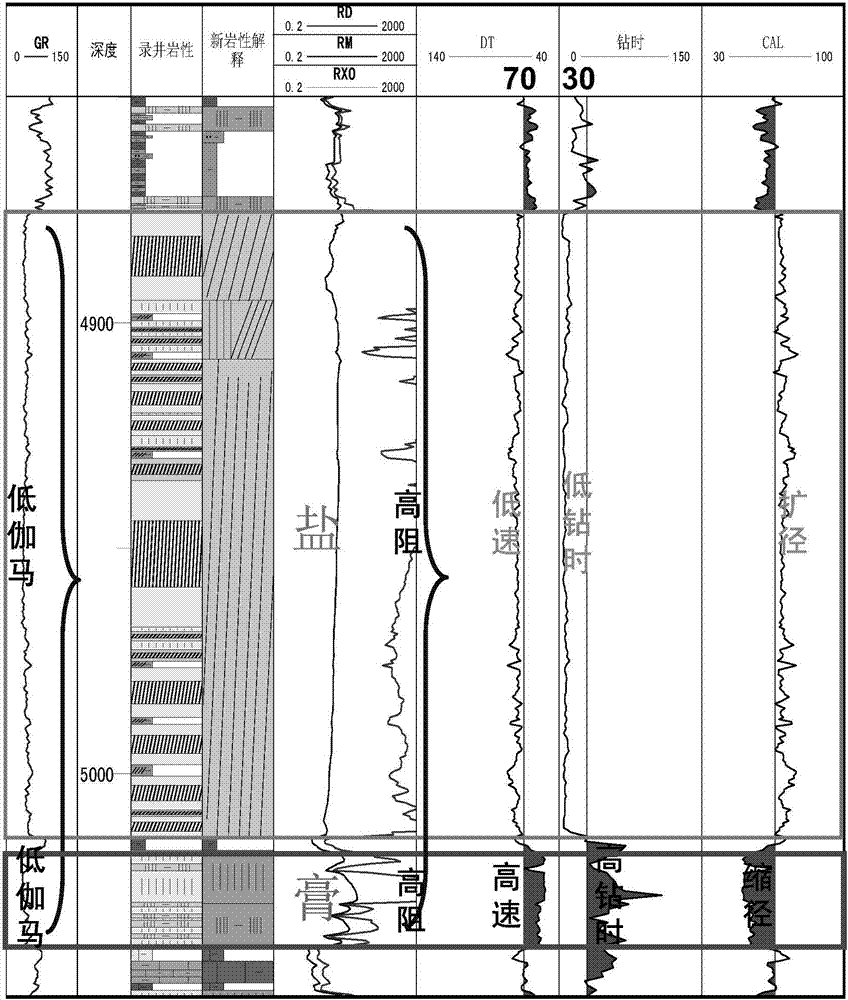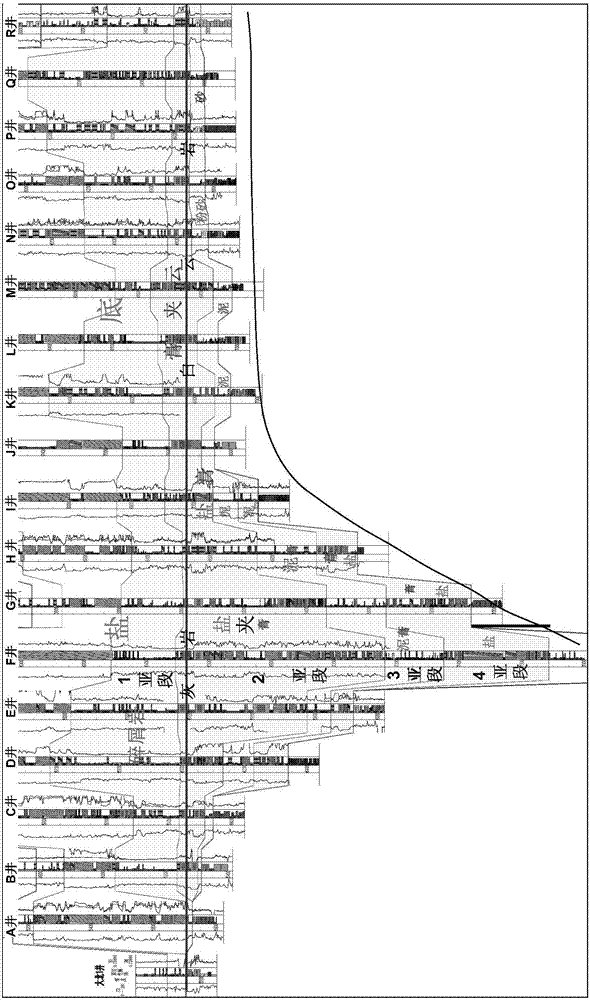Identification and distribution prediction method of deep-buried and extruded complex gypsum-salt rock formations in foreland basins
An extrusion-type, gypsum-salt technology, which is applied in the fields of oil exploitation and geological exploration, can solve problems such as low accuracy, inability to accurately predict, and difficulty in reflecting accurate changes in deep lithology, and achieve the effect of improving prediction accuracy
- Summary
- Abstract
- Description
- Claims
- Application Information
AI Technical Summary
Problems solved by technology
Method used
Image
Examples
Embodiment Construction
[0039] In order to have a clearer understanding of the technical features, purposes and beneficial effects of the present invention, the technical solution of the present invention is described in detail below, but it should not be construed as limiting the scope of implementation of the present invention.
[0040] In a work area in the Tarim Basin, the Paleogene has developed a thick gypsum-salt rock formation of more than 3000m. Due to the strong north-south structural compression since the Neogene, the deeply buried gypsum-salt rock formation has greater plasticity, and creep, rock formation, etc. It is difficult to predict the lithological sequence distribution and rock thickness distribution, which has become an important problem in formation velocity simulation and drilling engineering safety. Taking the Paleogene gypsum-salt rock layer in the Foreland Basin as an example, the technical solution of the present invention will be further described in detail.
[0041] This ...
PUM
 Login to View More
Login to View More Abstract
Description
Claims
Application Information
 Login to View More
Login to View More - R&D
- Intellectual Property
- Life Sciences
- Materials
- Tech Scout
- Unparalleled Data Quality
- Higher Quality Content
- 60% Fewer Hallucinations
Browse by: Latest US Patents, China's latest patents, Technical Efficacy Thesaurus, Application Domain, Technology Topic, Popular Technical Reports.
© 2025 PatSnap. All rights reserved.Legal|Privacy policy|Modern Slavery Act Transparency Statement|Sitemap|About US| Contact US: help@patsnap.com



